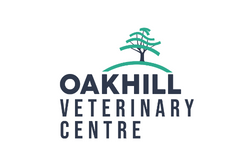PET OBESITY: A GROWING NATIONAL CONCERN
Pet obesity has been on the rise for over a decade, and in the UK, it has now reached epidemic proportions. As veterinarians, we urge pet owners to take excessive weight gain and obesity in pets seriously. This growing issue is not just cosmetic—it’s a critical welfare concern. Obesity can shorten your pet’s life, increase the likelihood of disease, and impair their ability to enjoy everyday activities like exercise.
The health risks of pet obesity
Obesity in pets can lead to serious health complications or worsen existing conditions, drastically affecting both their quality and length of life. Some of the most common health risks include:
- Diabetes
- Heart disease
- Respiratory problems
- High blood pressure (hypertension)
- Certain cancers
- Osteoarthritis and joint degeneration
- Bladder stones
Additionally, obesity can sometimes signal underlying medical issues such as hypothyroidism (underactive thyroid) or Cushing’s disease (overactive adrenal glands).

Is your pet at risk?
Certain factors can increase your pet’s likelihood of becoming obese. In dogs, these risk factors include:- Breed: Some breeds are genetically predisposed to weight gain.
- Age: Obesity becomes more common with age.
- Neutering: Neutered pets may gain weight more easily if their diet isn’t carefully managed.
- Sex: Female dogs, especially older ones, are more prone to obesity.
Recognising obesity in your pet
Obesity occurs when excess body fat negatively impacts your pet’s health and quality of life. Pets are considered overweight if they weigh 10–20% above their ideal weight and obese if they exceed their ideal weight by 20% or more.
Since weight gain often happens gradually, it can be difficult for owners to notice. However, early recognition can prevent severe obesity and related health issues.
To assess your pet at home, look for the following signs:
- Ribs: Can you feel them? If not, your pet may have excess fat.
- Spine: A noticeable “fat pad” might cover their back.
- Tummy: A sagging, bulging belly that wobbles when they move is a key indicator.
- Face, legs, and neck: Fat pads in these areas are common in obese pets.
If you suspect your pet may be overweight, book onto a FREE weight clinic with one of our RVNs. On your first visit to the weight clinic, your pet will be weighed and their body condition assessed. We will also discuss your pet’s current diet, treats and exercise levels. From this information an initial target will be created, which may change throughout the journey following regular assessments. An initial easy-to-follow feeding and exercise plan will be created for your pet using the information obtained. Don’t worry, treats can still be worked into this plan!
By addressing pet obesity, you’re not just helping your furry friend live longer—you’re giving them the chance to live a happier, more active life.
